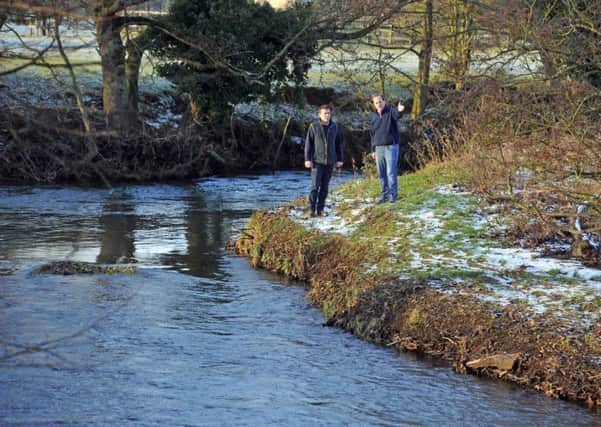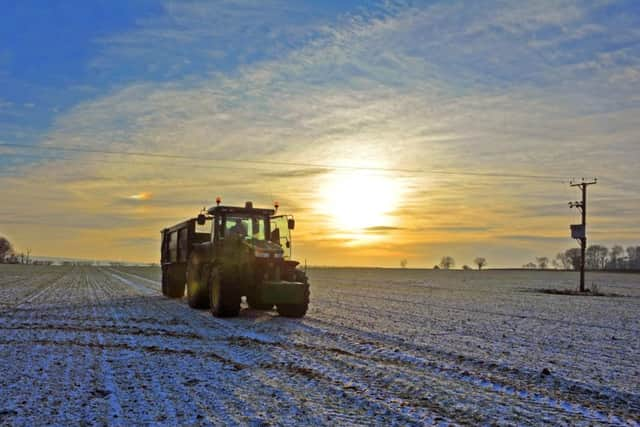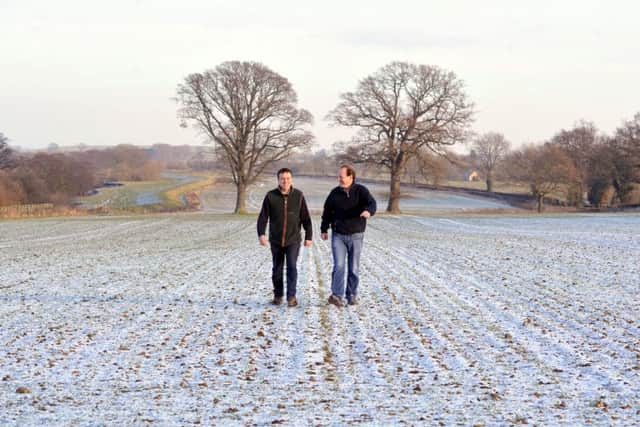Best defence to defy the floods at Ness


Richard Murray Wells’ family has farmed here since 1949 when his grandparents Hugh and Cynthia moved in to Ness Hall, which had been purchased by his great grandmother Doris Gillam. Having started with around 900 acres the farm was built up further during their tenure and Richard’s father’s, David Murray Wells.
Today the farming enterprise based at Ness runs to around 2,000 owned acres of which 1,600 is arable. With other managed farms and contract farming the total arable land under Richard and his farm manager Max Ward’s tutelage is around 4,200 acres. They also have grassland and betwixt the two main disciplines of making the most from combinable crops and looking closely at environmental stewardship they are seeking to achieve the right balance.
Advertisement
Hide AdAdvertisement
Hide Ad“Potentially farming is on the precipice of enormous change through Brexit,” says Richard. “At present it’s not clear to me exactly which way we are going. It sounds like we’re going to be competing head-to-head on world grain markets and that’s going to be very tough. We’re all really waiting for more direction from the government on what they are wanting, but we know we need to be as efficient as possible.”


Squaring the circle between maintaining and improving the efficiencies of intensive arable farming to achieve maximum yields and carrying out practices that are beneficial for the climate and environment is a priority at Ness. Recently the farm hosted a Campaign for the Rural Environment day that centred on Ecological Focus Areas.
“‘We are in the HLS and ELS (higher and entry level stewardship) schemes and our current agreement ends in 2020. We’re actively looking at better environmental practices in improving soil structure, temporary grass leys and flood management so that towns such as Malton downstream from here don’t flood in future. All of our land is in a major water catchment with the River Rye, River Dove, River Riccal and Holbeck running through. The water piles up here and I’m keen to undertake a feasibility study on flood banks.
“If we could create flood banks to store the volume of water that flows down into towns such as Malton and York at peak times it could make all the difference. It’s about establishing soft defences in the countryside adding to the hard defences in urban areas. The idea would be to widen the flood plain, take some arable land back to grassland and look at pond and wetland creation.
Advertisement
Hide AdAdvertisement
Hide Ad“We’re talking with Natural England, the Environment Agency and the Ryevitalise Landscape Partnership Scheme. This is all part of what we hope will come under the government’s remit post-Brexit for farmers and landowners to deliver public goods.”


Winter wheat, spring wheat, winter barley and oilseed rape are the main crops with sugar beet and peas added to the mix for the 2018 harvest. The land varies from limestone to heavy clay to red and black sand.
“We have 2,500 acres of winter and spring wheat,” says Max, whose parents farmed at Oswaldkirk. He’s been with Richard since 2009 having previously worked on local farms. “Winter wheat varieties include Barrel, Costello, Gator, Graham, Kerrin, Leeds and Revelation. We’ve had the last two for three years and they’ve performed well, as did Graham that we grew for the first time last year. We averaged around four tonnes per acre for 2017. Our spring wheat is Mulika and has done well for us in recent times.”
Autotrack, variable fertiliser application, satellite imagery, yield mapping and min-till are all evidence that Richard and Max make the most of the arable land and don’t leave much to chance, except the weather.
Advertisement
Hide AdAdvertisement
Hide AdAll cereal crops are stored on the farm and benefit from the continuous flow and on-floor drying of an Allmet grain dryer. Ness trades straw for muck and Richard watches the grain markets closely.


Richard has no livestock at Ness. The land is low lying rolling terrain with the highest point being 250-300ft above sea level at Appleton. Grazing of the grass is by neighbouring farmers’ cattle and sheep. Encouraging wildlife and natural habitat through stewardship measures in conservation has been at the heart of the Ness approach for many years.
He tells of how the balance between the commercial end of the farm and being one of agriculture’s guardians of the countryside is achieved.
“Our aim in the arable sector is to achieve the best possible yields and quality from all of our crops using today’s technology, but we are also mindful of our role in tending for the beauty of where we live. We encourage those who want to undertake bird surveys to come here. We have a huge amount of species.”